Antique Tin Miners Lamp Mining Tool Hat Mount Teapot Lantern
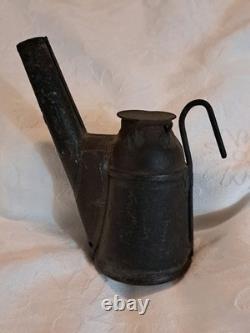
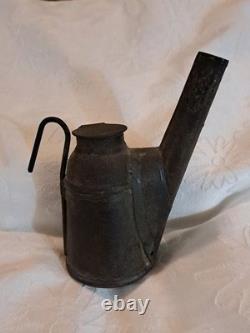
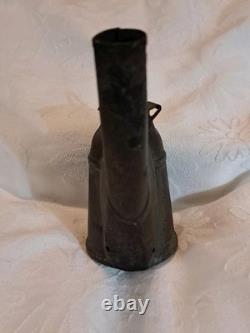

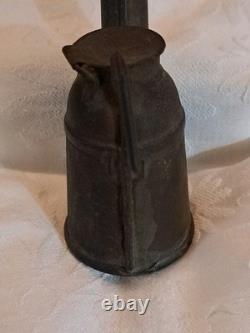
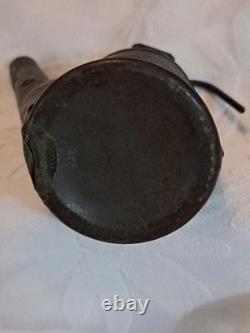

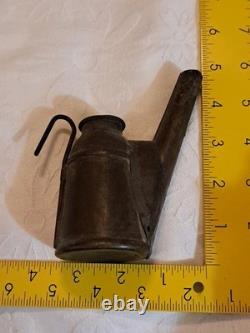
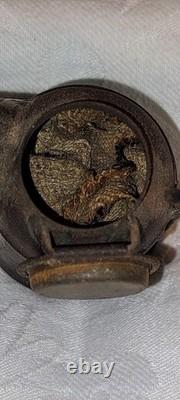

Explo Theoil-wicklamp first came into use in Scotland around 1850, and remained in use until the 1920s. Before oil-wick lamps were popularized, candles were the main source of illumination in the mine.
The candles were set into spiked metal candle holders, and either hammered into the framing timbers or precariously attached to a miners hat. The design of oil-wick cap lamps were simple and consistent, an appropriation of the teapot style of lamps available at the time.
The lamps were usually made of brass, with a hinged lid over the font and a hook on the back to mount the lamp on a miners cap. The font contained a mix of fat and oil for fuel, which would be pulled through the wick to the top of the spout, where the lamp would be lit.
Miners would use the cheapest type of fuel they could get their hands on, often using lard oil cut with kerosene that gave off anextremely smoky flame, irritating the miners eyes and leaving his face coated with soot. The collection of oil-wick lamps shows a variety of attachments that were made to the spout.
A drip ring could be added to catch any oil falling from the wick, and a reflector could be attached in and attempt to direct the light to the miners work surface.

